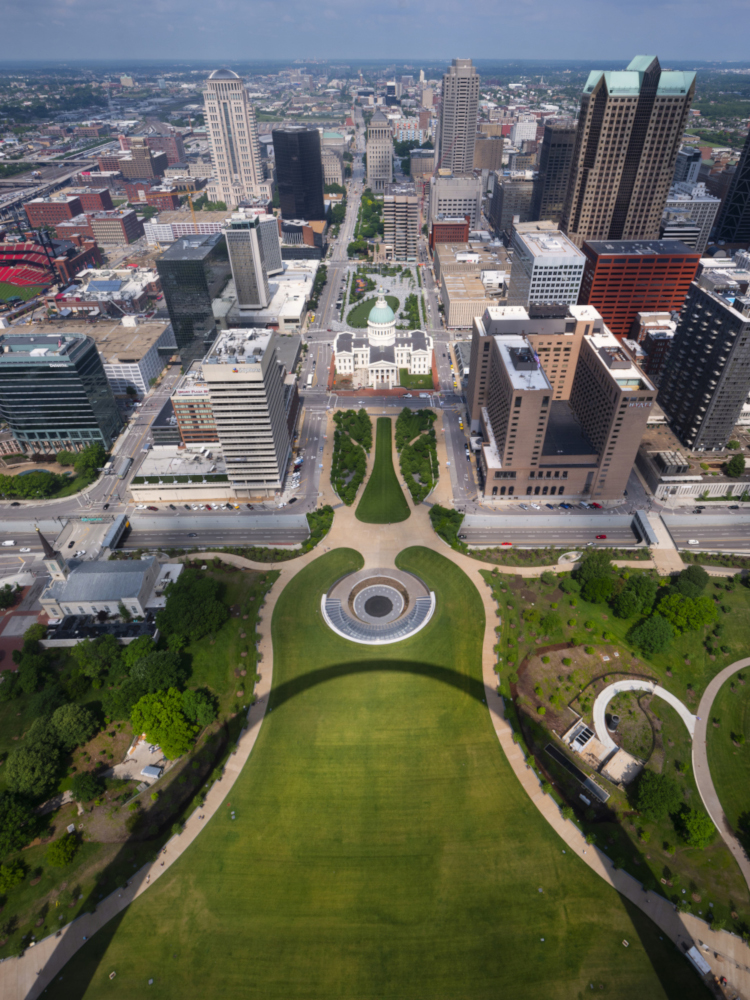In the past, architecture symbolized man’s struggle with overcoming structural and technological boundaries that were imposed by the environment. Today, we are witnessing an emerging counter-tendency: buildings that are, to some extent, hidden in their relation to nature with the bond between the two only being apparent in the subtlest of ways.
.jpg)
The Burj Khalifa skyscraper in Dubai, with its spire at an incredible peak of 829.80 meters, holds the record for being the tallest building in the world.
The relation between building and nature is present and missing at one and the same time. Within architecture, pursuing a relation that is mostly invisible may seem like a paradox. Architecture has in fact since ancient times been an instrument that allowed man to transform territories for the purpose of accommodation through the shelter of a roof or shelled inside of walls, housing both family and collective human activities.
As time has progressed, our need for shelter has evolved, prompting architecture to become more complex in its concept as a result—the dimensions of buildings have changed, and their singular characteristics have been refined to accommodate our changing needs. In modern history, there is no shortage of buildings that were designed to challenge, and even defy, the structural and technological limits that were imposed by their surrounding environment. When thinking of such architecture, one’s mind immediately thinks of the SOM skyscraper, the Burj Khalifa, designed with a spear that reaches no less than 829.80 meters, towering over Dubai while holding the record for being the tallest building in the world.
.jpg)
The integration between architecture and territory, here exemplified by the Antinori Winery project of Archea Associati. The project was inaugurated in 2012.
© Photo: Nora Santonastaso / design outfit
If one seeks to explore architecture that takes its form according to the contrasts and complements of its surroundings, one can glance towards an unusual building that is immersed deeply in the Chianti Classico area of Tuscany. Here, we act as guests of the Antinori Marquises, a 26th-generation winemaker, dating back to 1385 when Giovanni di Pietro Antinori joined the Florentine Art of Winemakers. On October 25th 2012, the new winery and its cellars were inaugurated. Designed by Archea Associati, the building is perceived as if almost disappearing into the soft slopes of its harbouring hill and spans across multiple floors with a total area of 39.700 square meters.
With its ascending path that leads visitors up to the roof of the structure through a large, helical staircase, the winery acutely embodies the integration of an architectural structure and its surrounding nature. The building’s edges flow seamlessly in an irregular yet smooth pattern that echoes the green slopes of the hills on which it rests. The winery of Antinori disappears into the landscape when viewed from above while being perfectly present and articulated when standing in front of its structure.
.jpg)
The Plus, designed by Bjarke Ingels, will host the new Vestre production plant, located in a Norwegian forest.
© Render: Bjarke Ingels Group (BIG)
Soon to be hidden in a densely tree-lined forest is the production plant of sustainable design company Vestre—an eco-sustainable structure in all meanings of the word. Designed by Bjarke Ingels Group, The Plus seeks to translate the values of Vestre into architecture through the elimination of the limits that are often imposed on industrial plants, causing them far too often to stand out rather than blending into their habitat. The construction features simple, transparent diaphragms that are inserted into multiple places, allowing nature to quite literally enter the building. Adding to that, the raw material used for The Plus includes the very trees that were cut down to make space for the plant, thus making for a full-circle recycling process.

The new Gateway Arch Museum in St. Louis contrasts an underground building with a slenderly tall structure, integrating the two meanings of architecture.
© Photo: Nic Lehoux
The Museum that lies at the foot of the Gateway Arch has recently reopened to the public after complete renovation. The Gateway Arch Museum is an architectural monument of St. Louis, designed by Finnish architect Eero Saarinen in 1947. A slender concrete structure that stretches 192 meters high, the Gateway Arch is a symbol of overcoming the structural and technological limits within architecture, while at the same time standing out through its contrasts to the invisible underground architecture that was designed by the James Carpenter Design Associates to house the extension of the pre-existing museum.
The new entrance to the exhibition space is to be found at a lower level than the one occupied by the large green park arrangements. A long walkway, designed also to accommodate visitors with restricted mobility, plays an important complementary role: it draws the curvilinear shape of the canopy that protects the entrance of the museum in, thus hiding it from view of the potentially distracted visitor.
Originally written by Nora Santonastaso